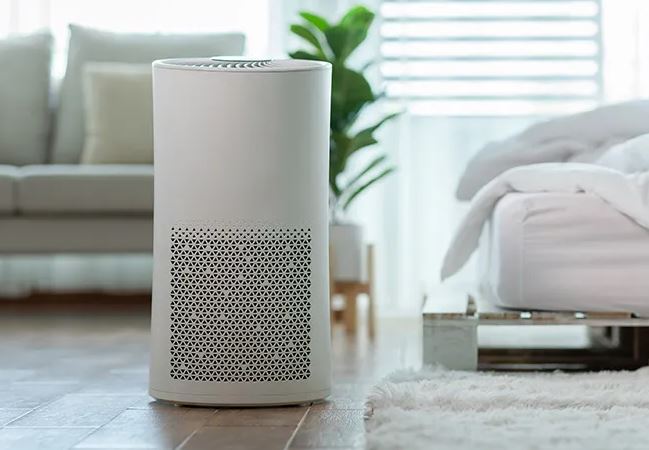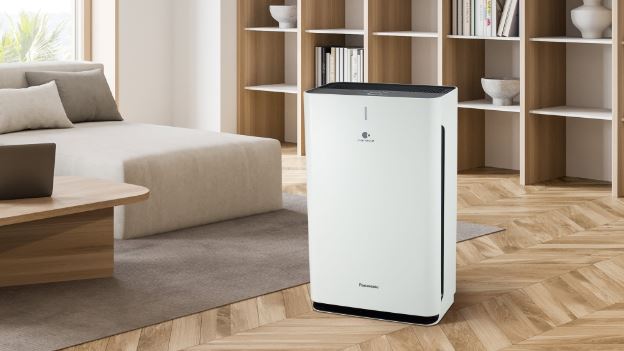Protect Your Family from Hidden Dangers: Air Purifiers for a Safer Home
Protect Your Family from Hidden Dangers: Air Purifiers for a Safer Home
Blog Article
In an era of heightened health awareness, the air we breathe in has taken center stage for homeowners and health-conscious individuals. With growing concerns over air pollution and a greater awareness of the effects of indoor pollutants on our health, it's no surprise that the demand for air purifiers is on the rise.
Air purifiers are devices that eliminate airborne contaminants in a space, improving indoor air quality. They are especially advantageous for individuals suffering from allergies, asthma, and respiratory conditions as they can significantly reduce the amount of allergens, pollutants, and irritants in the air. Even healthy individuals can take advantage of air purifiers, as they provide reassurance and safeguard against airborne diseases.
This comprehensive overview will delve into the intriguing world of air purification, discussing the perks they offer, the array of models available, key considerations when selecting the right model, and maximizing your air purifier's potential. By the end, you should have a solid comprehension of air purifiers and be able to make an informed decision about whether investing in one is the right choice for your household.

Understanding Air Pollutants and Their Effects on Well-being
To appreciate the value of air purifiers, it's vital to understand the kinds of pollutants they target and the potential consequences of exposure to these contaminants.
Indoor air pollutants can be generally classified into three primary types:
- Airborne Particles: This includes solid particles and liquid droplets floating in the atmosphere. Examples include pollen, smoke, dust, pet dander, and mold spores, to name a few. Particulate matter can lead to respiratory complications and trigger allergic reactions.
- Volatile Organic Compounds (VOCs): VOCs are gaseous compounds released from solids and liquids. Sources of VOCs include aerosol sprays, cleaning products, paints, and pesticides, among others. Exposure to VOCs can lead to eye, nose, throat irritation, headaches, and stomach discomfort.
- Understanding Biological Contaminants: These include bacteria, viruses, mold, and mildew. They can cause a spectrum of health concerns, from allergy symptoms to more serious health risks.
The consequences of exposure on human health can differ considerably. For those suffering from respiratory ailments or weakened immune systems, exposure to indoor air pollutants can lead to serious health issues. Even for healthy people, chronic exposure to certain pollutants can contribute to the development of respiratory issues and other health problems over time.

Unraveling Air Purification Technology
Air purifiers use a range of physical and chemical mechanisms to effectively eliminate contaminants. Understanding the basic mechanisms employed by purifiers will help you grasp how they work and the variety of options on the market.
Here are the key processes and technologies used in air purifiers:
- The Power of Mechanical Filtration: This is the most common method used in air purifiers. It involves using filters designed to trap airborne particles as air is drawn into the purifier. The filter composition can differ, each designed to trap particular particle types. For example:
- Pre-filters: These are usually the first line of attack, capturing larger particles like dust, hair, and similar larger particles.
- HEPA (High-Efficiency Particulate Air) filters: HEPA filters are remarkably proficient at trapping tiny particles, including dust mites, pollen, bacteria, and viruses. To be labeled a bona fide HEPA filter, it must trap a minimum of 99.97% of particles down to 0.3 microns in size.
- charcoal filtration: These filters are designed to adsorb odors, VOCs, and gaseous pollutants.
- The Power of Ionization: Ionizers use electricity to create negatively charged ions, which latch onto airborne particles. The particles become charged, causing them to stick to surfaces or the purifier.
- Ozone Generators: Some air purifiers use ozone, a powerful oxidant, to break down pollutants. While effective, excessive ozone exposure carries risks so these types of purifiers should be used with moderation and in well-ventilated areas.
- UV Light: Shining a Light on Purification: UV light can be used to effectively eliminate bacteria, viruses, and mold. UV light is often used in combination with a filter to eliminate particles, while UV light ensures any remaining biological contaminants are destroyed.
Selecting the Perfect Purifier
With a plethora of options available, selecting the right air purifier can be a daunting task. It's important to consider multiple factors to ensure you make the best decision for your unique requirements and space.
Here are some key considerations:
- Room Size: Air purifiers are typically rated according to room size, so it's important to choose a model that can efficiently purify the air in the designated space. Most purifiers will list a maximum room coverage or CADR, which indicates the volume of filtered air delivered per minute.
- Understanding Contaminants: Identify the particular contaminants you want to target. If you suffer from allergies, look for a purifier with a HEPA filter. For eliminating odors, consider a model with a carbon filter. If you're concerned about pathogenic microorganisms, a purifier with UV-C light might be best.
- Whisper-quiet Performance: Air purifiers can produce different noise levels, so if you plan to use it in a serene environment, look for models with a sleep mode or quiet setting.
- Maintaining Performance: Consider the long-term expenses and upkeep of the purifier. HEPA filtration systems may need periodic replacement, depending on use and environmental factors. Include filter replacement costs in your calculations when making your choice.
- Enhancing Your Experience: Many purifiers offer smart features like wireless connectivity, air quality sensors, and smart modes, allowing remote control and monitoring. These features can improve your purifier's performance and ease of use.
Unlocking the Full Potential of Your Air Purifier
Once you've invested in an air purifier and set it up, there are several things you can do to ensure it operates at peak performance and delivers the maximum benefits:
- Optimal Placement: Position your purifier in an unobstructed area, avoiding walls and furniture, to ensure effective airflow. Avoid placing it near external openings as drafts can impact its efficiency.
- Round-the-clock Operation: For the best results, it's recommended to run your purifier regularly. Many models have low-energy settings or automatic modes that adjust the fan speed based on air quality, so you can maintain clean air without running up a huge energy bill.
- Maintain the Filters: Regularly check and replace filters as recommended by the manufacturer. Over time, filters become clogged with particles, reducing the purifier's efficiency. Mark the date of replacement on your calendar so you don't forget.
- Minimize Indoor Pollutants: Alongside using an air purifier, take steps to reduce indoor pollutants. This could include regularly vacuuming and dusting, using natural cleaning products, and minimizing the use of strong chemicals or aerosols. Report this page